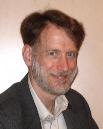


Electric polarization and orbital magnetization turn out to be surprisingly difficult concepts to define precisely in a quantum-mechanical context, despite the fact that they are central to any elementary treatment of electrostatics and magnetostatics. I will review the theory that has emerged to describe the polarization and magnetization in 1993 and 2005, respectively. The basic approach is to decompose the continuous charge distribution into localized packets, known as Wannier functions, whose contribu-tions are well defined. I will also explain how the theory can al-ternatively be cast in terms of so-called "Berry phases" and "Berry curvatures" defined in terms of the crystal eigenstates. Finally, I will briefly mention how these essentially topological properties also enter into the calculation of other properties of current interest, such as the transverse conductivity in the anomalous Hall effect.



Electric polarization and orbital magnetization turn out to be surprisingly difficult concepts to define precisely in a quantum-mechanical context, despite the fact that they are central to any elementary treatment of electrostatics and magnetostatics. I will review the theory that has emerged to describe the polarization and magnetization in 1993 and 2005, respectively. The basic approach is to decompose the continuous charge distribution into localized packets, known as Wannier functions, whose contribu-tions are well defined. I will also explain how the theory can al-ternatively be cast in terms of so-called "Berry phases" and "Berry curvatures" defined in terms of the crystal eigenstates. Finally, I will briefly mention how these essentially topological properties also enter into the calculation of other properties of current interest, such as the transverse conductivity in the anomalous Hall effect.